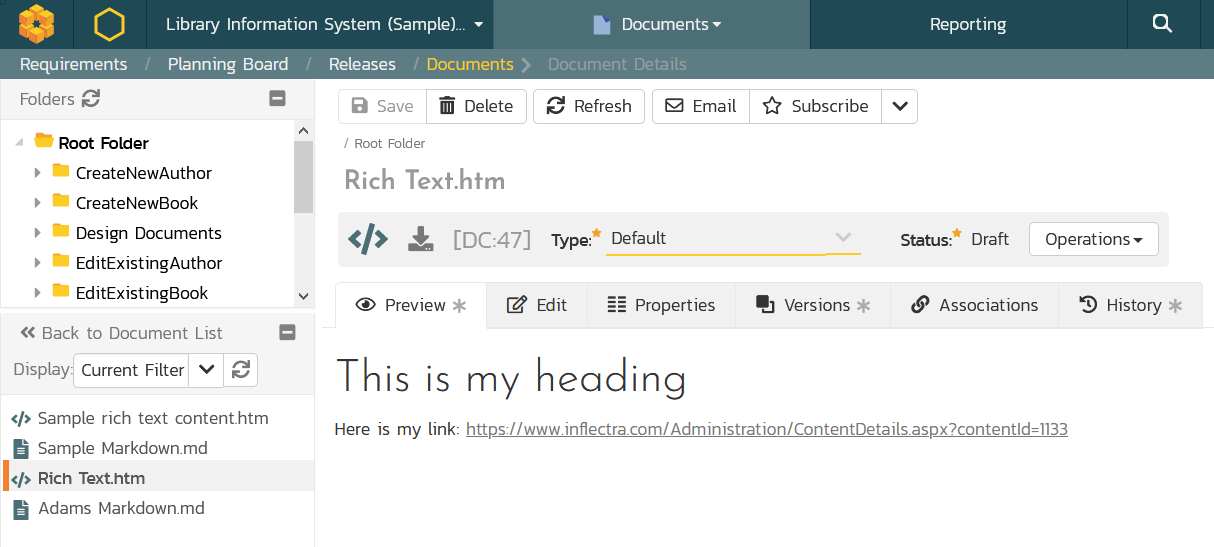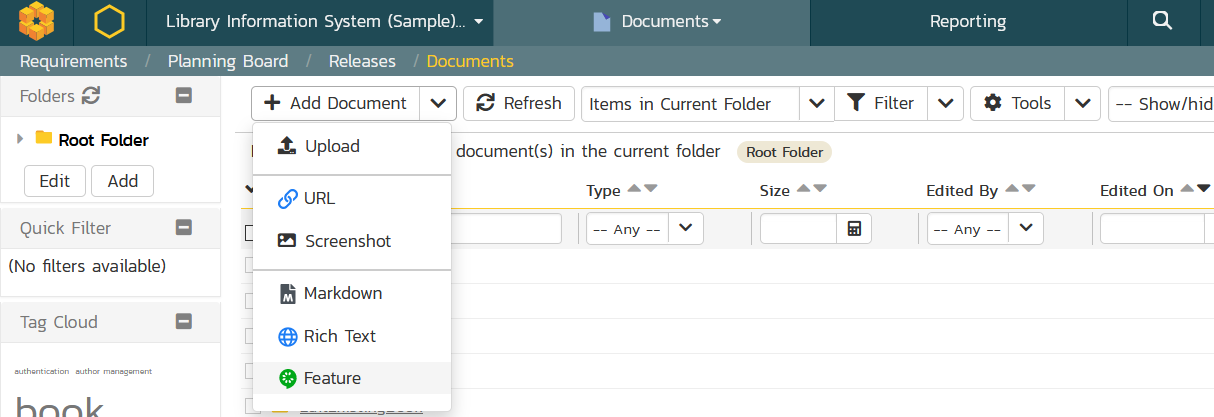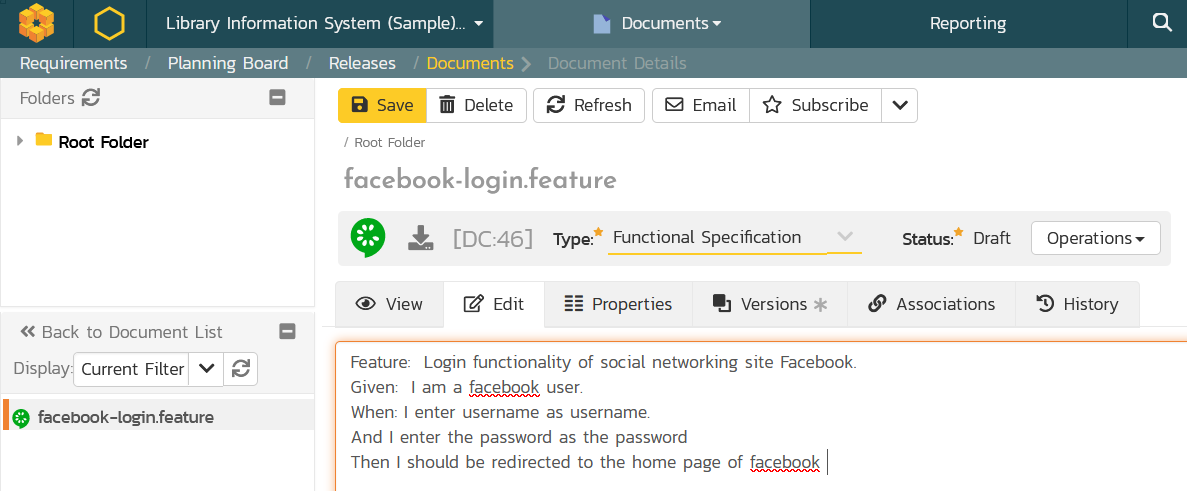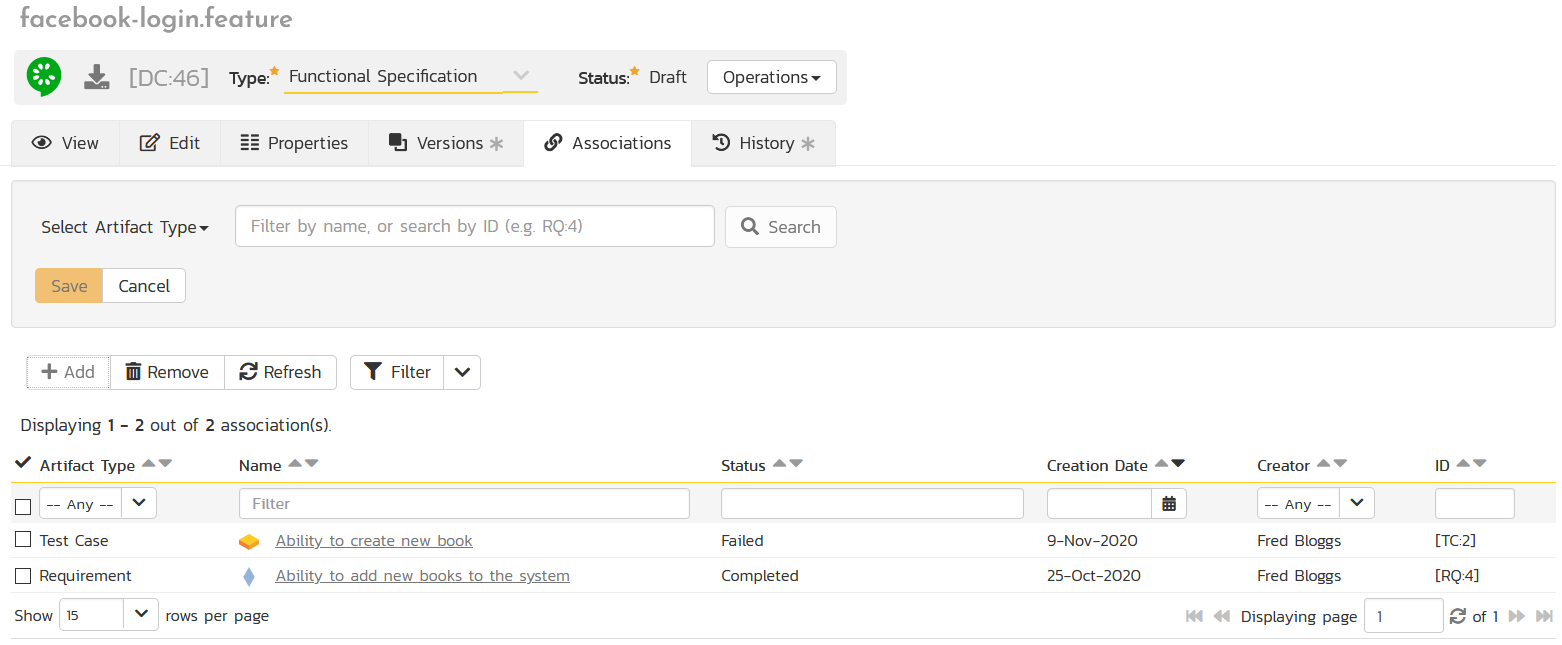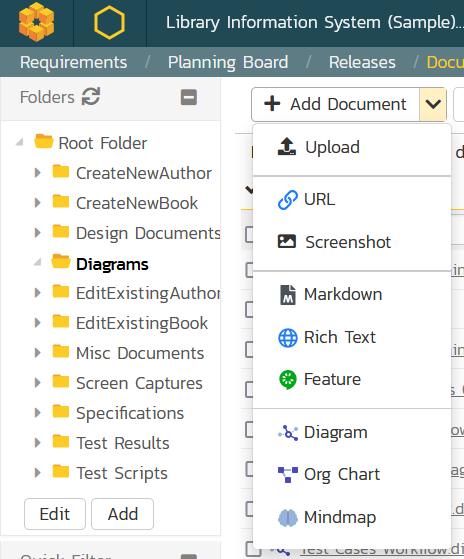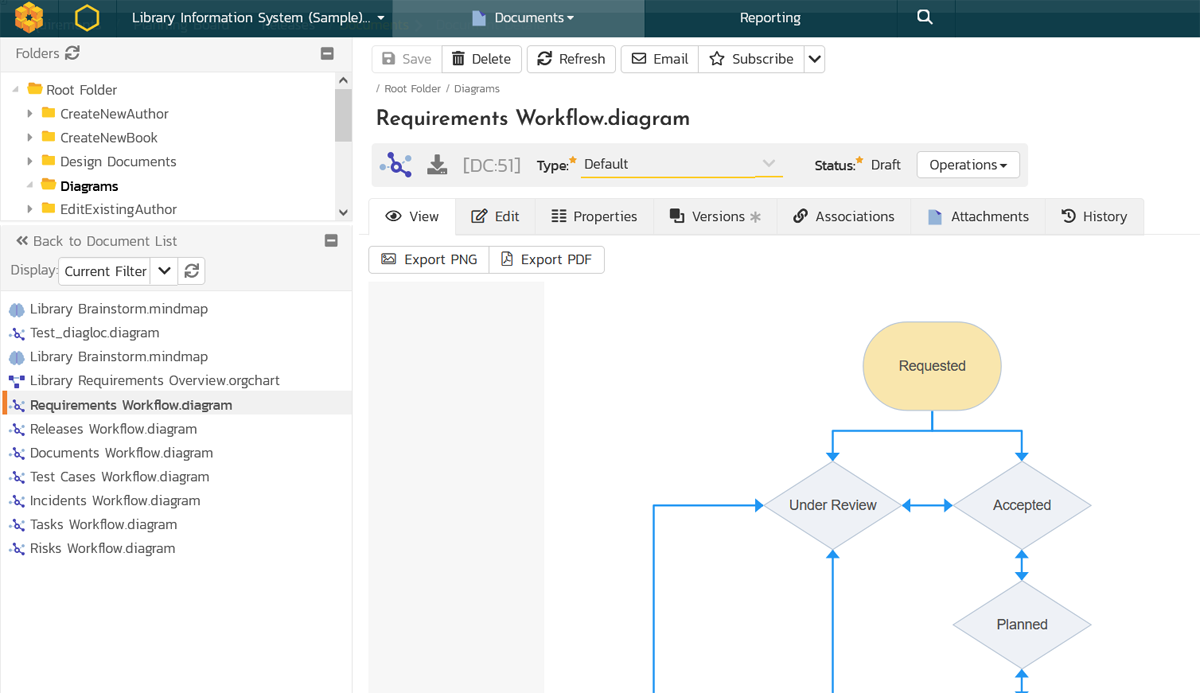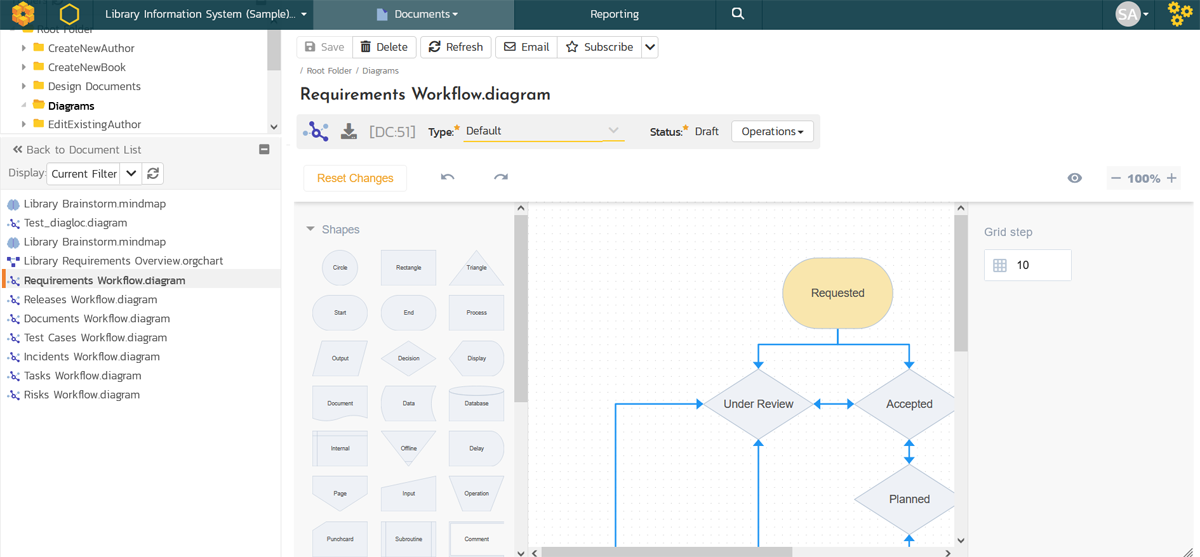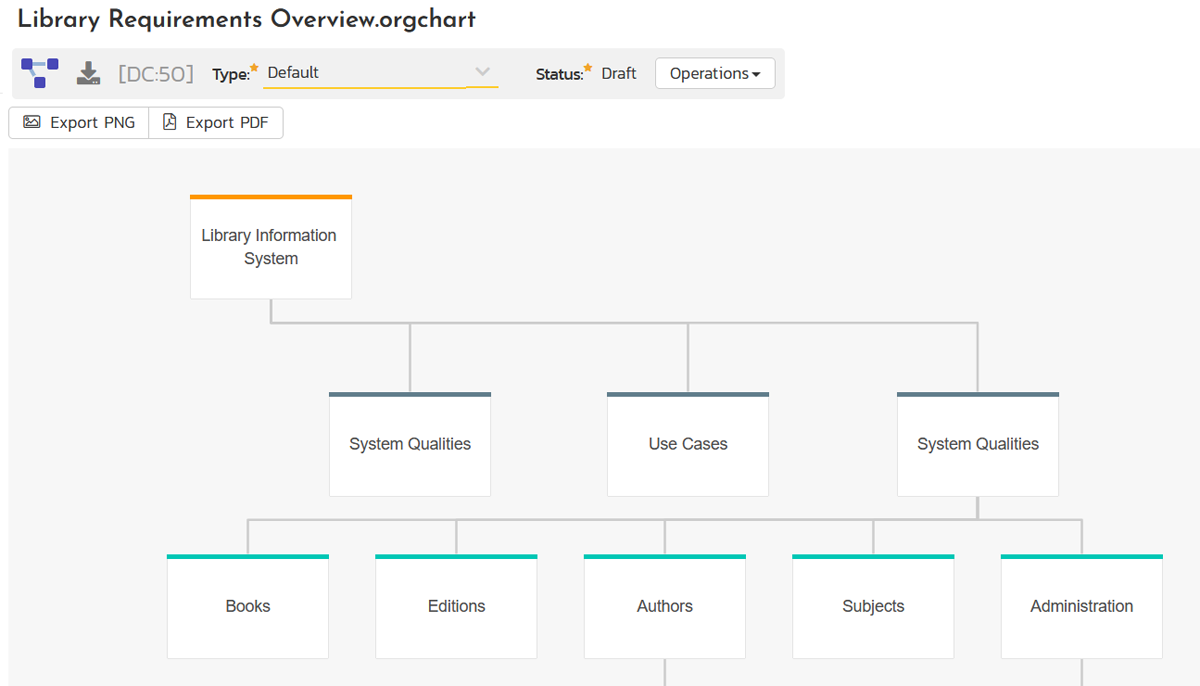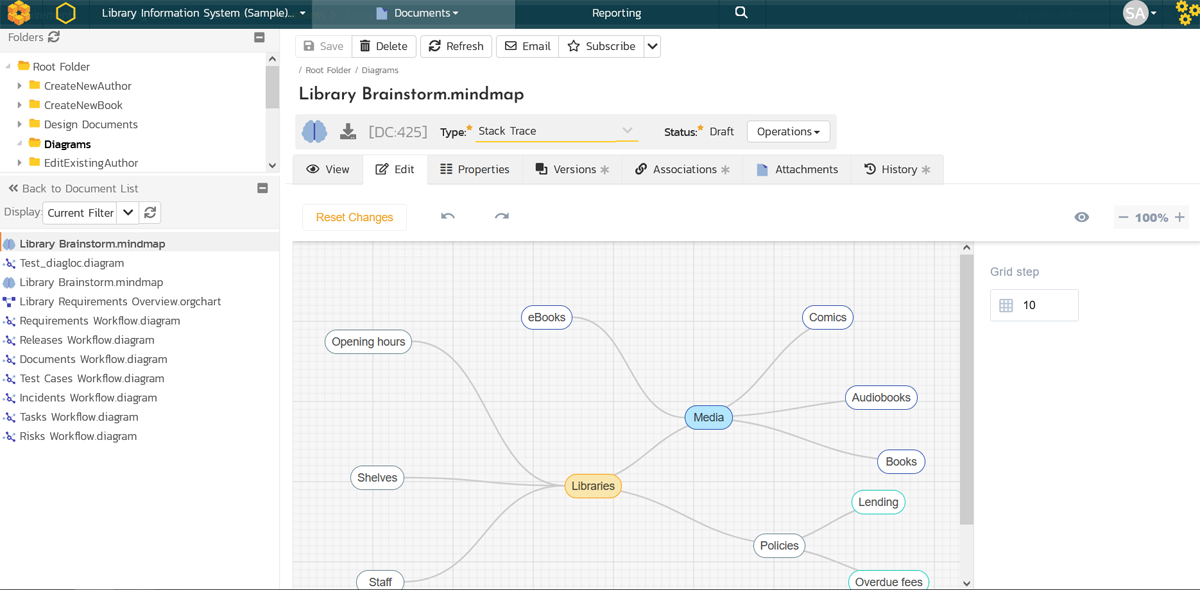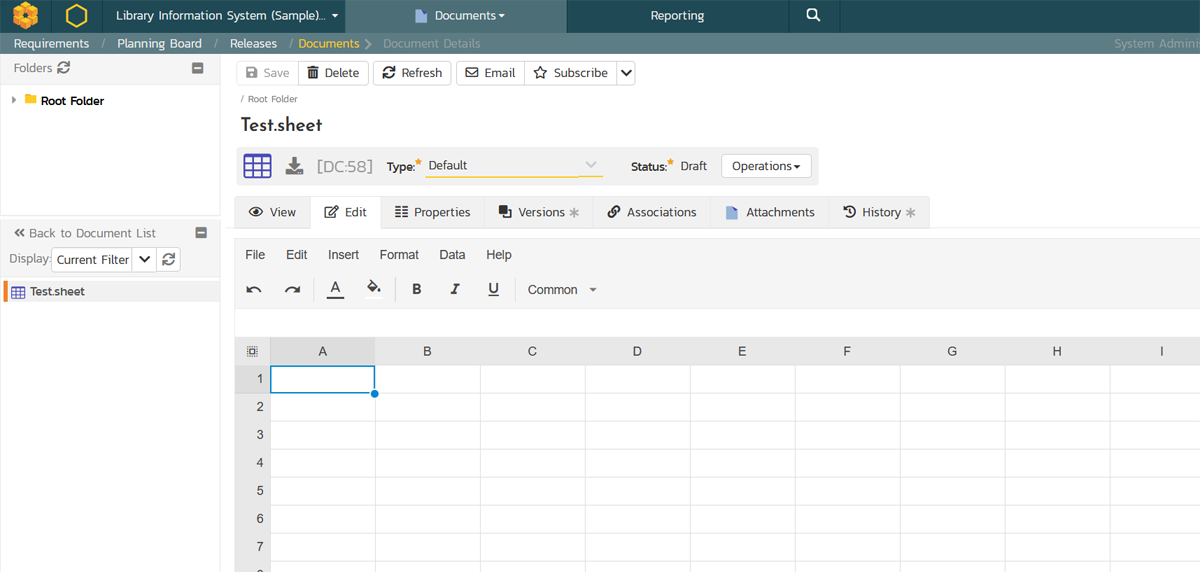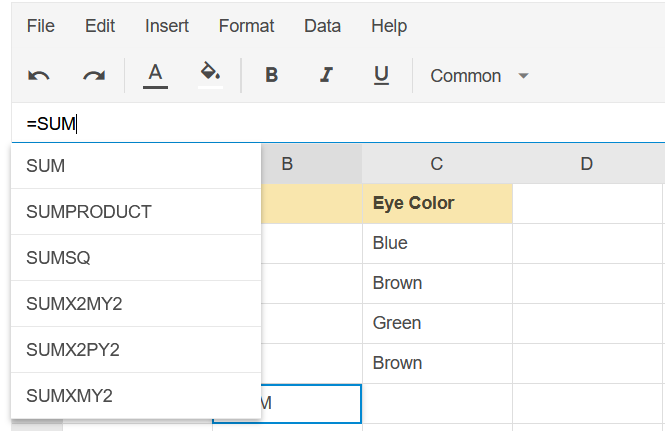Rich Content Editing
SpiraTest makes the capturing and collaboration on unstructured content easy. You can author textual content in markdown, rich text, and Gherkin BDD feature-file format as well as create flowcharts, mindmaps and other diagrams directly inside the system. The internal Wiki lets you link pages together, embed diagrams and comes with built-in version tracking and rollback. Finally, there is also a built-in spreadsheet editor for tabular data.
Create Unstructured Content
SpiraTest’s built-in Wiki and diagram editors make authoring unstructured, freeform content easy and straightforward for all teams. SpiraTest lets you write your content in your favorite format (plain text, rich text, markdown, Gherkin), add inline diagrams and flowcharts, and have all of the versioning and workflow capabilities at your disposal. Naturally, you can link this content to your requirements, test cases, and other SpiraTest artifacts as well.
Markdown Text Editing and Preview
Markdown is a lightweight markup language that you can use to add formatting elements to plaintext text documents. Created by John Gruber in 2004, Markdown is now one of the world’s most popular markup languages and it is often used to create wikis and other unstructured content.
SpiraTest includes a built-in markdown text editor that lets you quickly and easily create and modify markdown content and files. They can be easily grouped into folders just like documents.
When you click the Save button, the system will save a new version of the content, allowing you to preview the latest version:
Every time you make a change, the system will keep track of the versions as well as update the latest preview. You can view the previous versions directly inside SpiraTest:
You can of course revert the document back to an easier revision. The normal SpiraTest document management workflow is available, with the ability to assign the content to be reviewed and approved by contributors and editors.
Rich Text Creation and Editing
SpiraTest includes a rich text inline editing module. This lets you edit the rich text in a standard WYSIWYG text editor that will be familiar to your business users. This editor includes support for choosing the style, font, size, font weight, size, italics, color, background color. In addition, the rich text editor lets you easily enter bullets, numbered lists, quoted text, tables, images, and code snippets.
When you click the Save button, the system will save a new version of the content, allowing you to preview the latest version:
Every time you make a change, the system will keep track of the versions as well as update the latest preview. You can view the previous versions directly inside SpiraTest:
BDD Feature File and Gherkin Support
Behavior-Driven Development (BDD) is an Agile software development process that encourages collaboration among developers, QA and non-technical or business participants in a software project. Requirements in a BDD project are often expressed in Gherkin Feature files.
Gherkin is a business readable language which helps you to describe business behavior without going into details of implementation. It is a domain specific language for defining tests in a standardized format for specifications. It uses plain language to describe use cases and allows users to remove logic details from behavior tests. SpiraTest lets you create and edit Gherkin Feature files natively.
The inline Gherkin editor lets you write your BDD .feature files using the standard Gherkin BDD syntax.
When you save the changes to the feature file, the previewer will let you see immediate how it looks with the standard Gherkin syntax highlighting applied:
Once you are done, you can now link this Gherkin feature file to your choice of requirement or test case in SpiraTest:
Diagrams, Drawing and Flowcharts
SpiraTest makes it easy to create new diagrams, simply use the main ‘Add Document’ toolbar menu and browse the list of available diagram types (general, org chart or mindmap).
Each of the different types has its own special editor to make diagram creation easy.
Flowchart Diagrams
The flowchart diagram editor lets you view diagrams directly inside the system using the 'View' tab. You can also choose to export the diagrams as either a PNG graphics file or an Adobe Acrobat PDF document.
The built-in editor lets you choose a variety of shapes that you can combine with line connectors to create different types of flowchart or diagram. We have included some samples based on the default artifact workflows in SpiraTest to illustrate its power and flexibility:
This type of diagram is especially useful for business and system flowcharts, data flow diagrams, system architectures and network diagrams.
Organization Charts
When you create a diagram of type 'Organization Chart' the system provides special color-coded organizational unit boxes and hierarchical connectors to make it easy to create tree views, sitemaps, or other hierarchical data really easily:
The editor for organizational charts is a simplified version of the main diagram editor. It automatically color-codes the organizational units based on their depth in the hierarchy and has options for displaying the charts either horizontally or vertically, depending on your preference:
This type of diagram is especially useful for creating personnel organization charts, web information architecture sitemaps, high-level requirements hierarchies, and other diagrams that are hierarchical in nature.
Mind-map Diagrams
The third and final type of diagram is the mind-map. Although SpiraTest already has the ability to display actual requirements as a mind-map, sometimes you are not ready to write down actual requirements, you just want to quickly brainstorm ideas and have it be captured in the system. With this diagram type, you can take the main idea and then decompose it into a set of related ideas that come from the initial idea.
Mind maps are a great way to take a new concept and explore all the possible implications and outcomes related to that idea. Sometimes they can then become formal requirements, but sometimes they just remain a brainstorm for future reference.
The mind-map diagram editor lets you quickly add new idea "bubbles" to a mind map (linked to the parent idea) and the system takes care of automatically color-coding them based on their proximity to the initial, central idea. That way you can focus on brainstorming, vs. manually changing the colors or adding lines.
Spreadsheet Editing
In addition to the other content types listed above, SpiraTest has a built-in spreadsheet editor that lets you create and edit spreadsheets and other types of tabular data easily.
The editor includes a toolbar and menu-bar where you can specify the formatting of the cells, sort the data, cut, copy and paste and perform other common spreadsheet functions.
The system comes with a wide variety of built-in formulas, including, sum, average, and hundreds of other functions.
Although the SpiraTest built-in spreadsheet is very powerful, sometimes you want to export the data into another spreadsheet such as Excel. Natively the editor saves the data in a special *.sheet file format, but you can easily import / export to/from Microsoft Excel, using the Download option.
Try SpiraTest free for 30 days, no credit cards, no contracts
Start My Free TrialAnd if you have any questions, please email or call us at +1 (202) 558-6885





